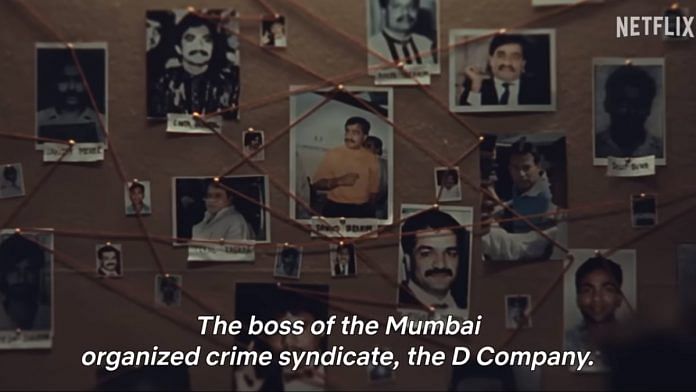If you love ‘Bombay’ and the twisted romance the city had with organised crime, Netflix documentary Mumbai Mafia: Police vs the Underworld will be a riveting 87-minute watch. Directed by Francis Longhurst and Raaghav Dar, the documentary gets a thriller-like treatment as the saga of mafia and Mumbai Police’s encounter specialists plays out.
The tension is created and held taut by a shorter run time that converts into lack of any wasted frame or cinematic moment. Mumbai Mafia focuses on how a few cops became larger-than-life figures as they tackled the rising terror and Mumbai’s organised crime through encounters. Two ex-Mumbai cops, Pradeep Sharma and Ravindranath Angre, talk extensively to the makers of the documentary. Sharma is currently awaiting bail hearing in a case related to murder of businessman Mansukh Hiren. While Sharma has to his record more than 100 encounters, Amngre has allegedly killed 54 alleged gangsters in multiple encounters.
The documentary traces the rise and fall of the cops, including that of Vijay Salaskar, another encounter specialist who was killed in action during 26/11. And how their popularity inspired multiple Bollywood movies, and a near cult following among local people. But the tide turned soon after a TIME magazine report in 2003 that raised questions on the police’s credibility and the ‘encounters’ it had conducted. The documentary also keeps alluding to the myth and life of Dawood Ibrahim and the infamous ‘D-company’ that once had its hand in almost every single business in Mumbai, including financing Bollywood films.
Also read: ‘The Pale Blue Eye’ is a gothic mystery thriller brimming with potential. Until it nosedives
Gritty, and gripping
What works for Mumbai Mafia is the lure and the lore of Mumbai gangsters that still generates curiosity. A decade of terror in Mumbai is pieced together meticulously through the accounts of police officers, journalists and a former ‘D-Company’ member.
While multiple movies — from Nana Patekar’s Ab Tak Chhappan (2004), to Shootout at Lokhandwala (2007) and its sequel and Once Upon A Time in Mumbai (2010) — have been based loosely on the real-life characters and incidents, this documentary brings those faces together for the viewers. There is no masala or songs, just cops who believe that they cleaned up the city good.
While Sharma and Angre speak with obvious pride about their role in eliminating gangsters, the voice of conscience among the cops of that era was police chief and founder of ATS, A. A Khan. It was Khan who led the shootout at Lokhandwala that resulted in the deaths of gangsters Maya Dolas and Dilip Buwa in 1991. Khan, who spoke to the makers of the documentary before his death mentions resigning from the force because he was disturbed by the blatant encounters and the competition among officers to have the bigger hit list.
Former journalists and authors Hussain Zaidi and Puja Changoiwala weigh in with their inputs and experience of covering Mumbai and the cops, and how the tide turned against the encounter specialists. Alex Perry, former TIME magazine correspondent, describes his experience of interviewing Sharma and the eventual impact of the piece on the culture of encounters.
Also read: Unlike BB Ki Vines, Bhuvan Bam’s Taaza Khabar is sadly a walking, talking cliché
No hero, but one villain
The documentary does not glorify the encounter cops, but definitely gives mind boggling insight into the world the cops inhabited. The cops talk about struggling with their first encounters, and later treating it as a necessary evil. In a city crumbling under the weight of extortions, killings and fear, ‘heroes’ had to rise, suggests the documentary.
The documentary doesn’t shed much light on the man who ran the show of terror three decades ago—Dawood Ibrahim. Barring a few anecdotes through his former neighbour Feroz Sayed, and an ex-‘D Company’ employee Shyam Kishore, there is not much that one gets to know about the man or his mind.
From the first killing to the 1993 blasts, Ibrahim is shown to be ruthless but highly organised, and methodical. Abu Salem’s capture by CBI and eventual extradition is the closest India gets to Ibrahim, who still remains at large. Updates about his ‘supposed location’ are a regular feature till date in India media.
Mumbai Mafia is making and unmaking of the encounter specialists by the media, where both Sharma and Aghre talk about being treated unfairly. But they also take it in their stride as the peripeteia imminent in a hero’s life. For better or for worse, Mumbai was cleaned up, and the terror of the mafia did die out, and for most, including Sharma and Aghre, that trumps everything else.
(Edited by Anurag Chaubey)



